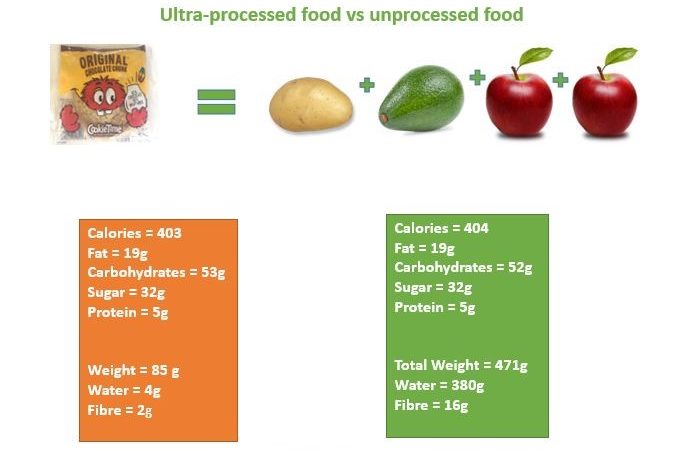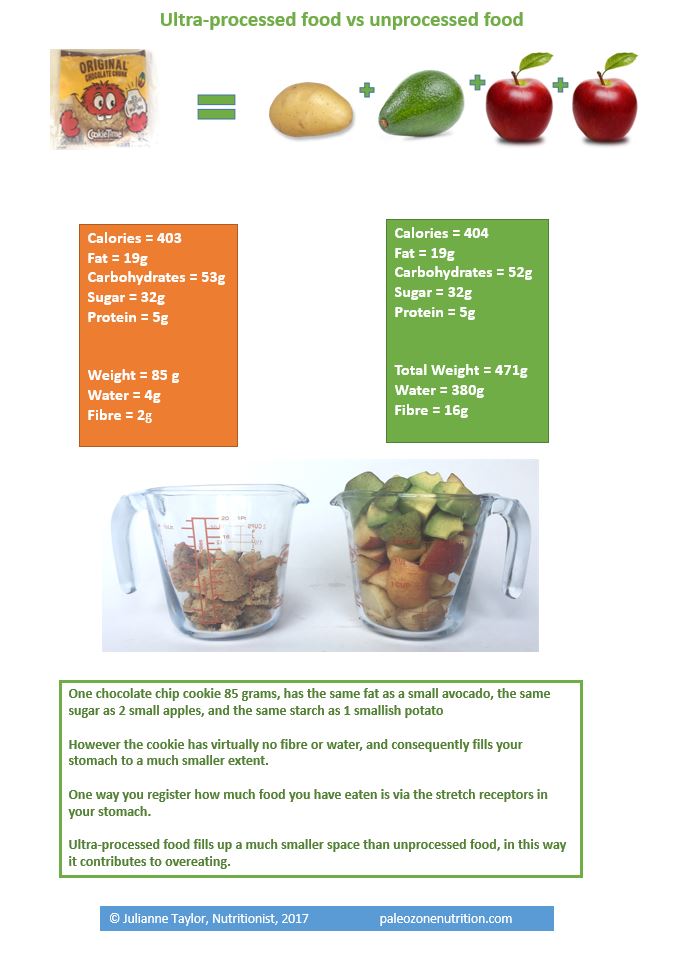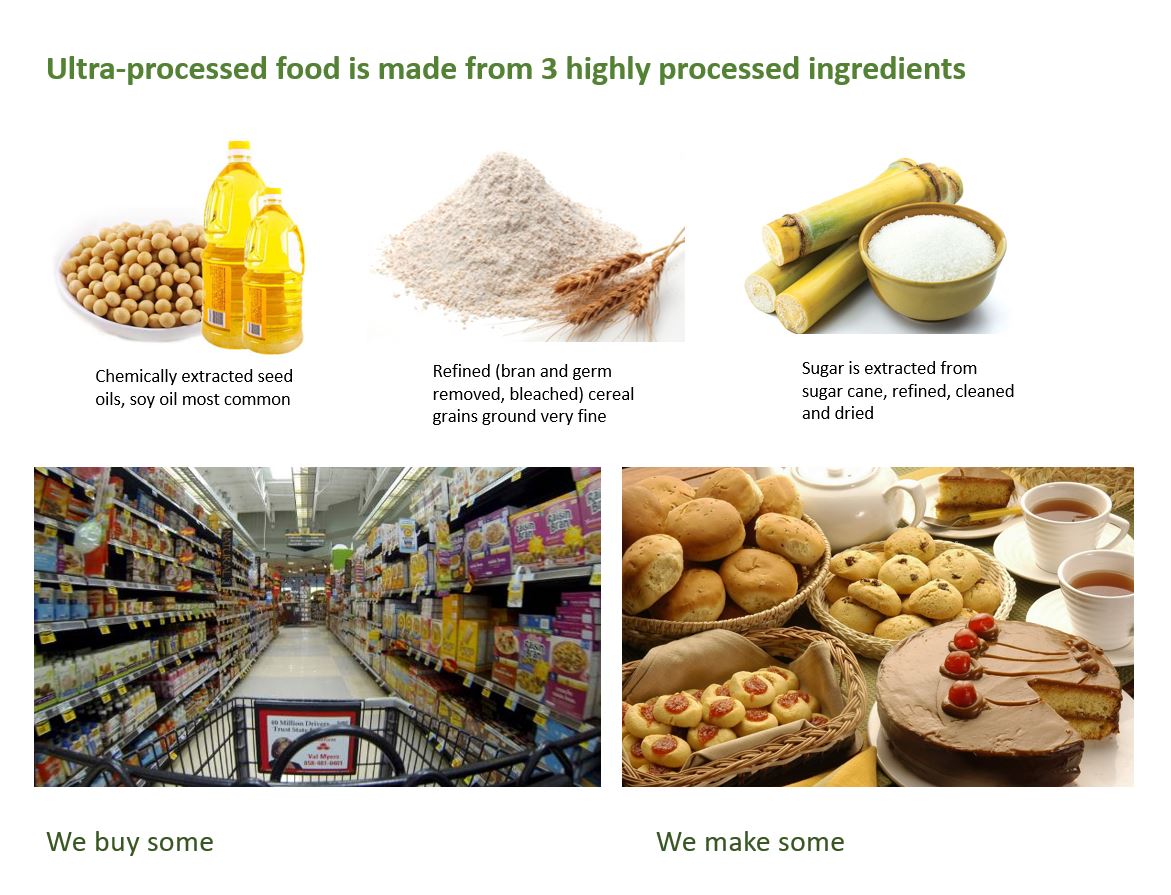
The cookie – an example of ultra-processed food
If we take a look at the ingredients in ultra-processed food – we can see it is all made of practically the same 3 ingredients – made into multiple different foods, with different textures, flavours, and colours. So while we think we are eating a varied diet, we are not.
Ultra-processed food is food that now makes up nearly 60% of the current Western diet.
How does ultra-processed food contribute to obesity?
Calorie density. It has a high ratio of energy (kjoules or kcalories) for the volume and the weight of the food.
Why? two things are removed that exist in unprocessed food – fibre and water.
Think about it – the majority of unprocessed food has fibre, water, or both. Meat – 75% water. Plants – variable fibre and up to 99% water. Very few foods have no water – they would have taken time and energy to collect and process. Often they were then mixed with water – think of grains, or legumes – often made into porridge type meals, after soaking, fermenting or grinding.
Ancestrally – dry food is uncommon. Today it makes up a lot of our diet. Bread, crackers, cereals, snacks in packets, pretzels, bread-sticks, cookies …
When we process food in such a way – remove fibre and water, then recombine, the volume is markedly reduced. This has an effect on how we digest it. First it takes up a smaller – much smaller space in our stomach. The gastric stretch receptors are one way we gauge the amount of food we have eaten. We tend to eat to a familiar feeling of distension.
Secondly – the speed at which energy is released from food is slowed by fibre and the amount of processing. Refining food makes it more accessible to enzymes which break it down into glucose and fatty acids at a sped up rate. Fibre would normally carry food and nutrients like polyphenols right down to the colon – without fibre, especially the cellular type (plants) the food digests and gets absorbed in the small intestine, the glucose hitting your bloodstream very quickly. A rapid increase in glucose tends to lead to a rapid decrease, and hunger from low blood sugar occurs faster.
To illustrate the points I’m making – here is an example:
Lets take a big cookie – in New Zealand these are regularly eaten as a snack and individually packaged.
Here is the cookie: It weighs 85 grams.

And here is what happens when I take foods that give the exact same fat (to mimic the fat amount in the cookie, but as a whole food fat), starch and sugar (again as whole not refined foods).
1 cookie = fat of 1 avocado plus the starch of 1 potato, plus the sugar of 2 apples.
Things to note: fibre 16g in whole food, 2 g in refined cookie, total volume – fills about a 3 cup space compared to 1 cup. Actual weight difference – whole food 471g, cookie 85g.
The weight of real food choice is 5.5 times larger! That is a lot, and would stretch your stomach so much more – and remember this is the exact same calories.
And I haven’t even compared the nutrient differences.
So next time you think about eating a cookie for a snack – how about eating some whole foods instead, a couple of apples and a handful of nuts for example.


Really interesting and thought provoking….but especially when some of us could eat more than one cookie 😉
That’s a whole lot of whole food equivalent!